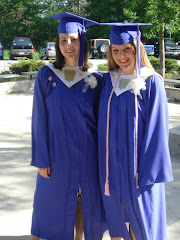During the sixties if a film was up for “Best Picture,” against a musical they were doomed. Musicals dominated the sixties beginning with West Side Story winning the award in 1961. “West Side story was soon followed by “My Fair Lady,” “The Sound of Music,” and “Oliver!” Most of the movies at the time strayed away from violence during this time and were directed more for family audiences, of which musicals are aimed towards. The sixties are known for its anti-war movement and civil rights. It was not a time for mourning, but a time of change and rejoicing, so therefore the Academy was likely to choose films that reflected this. Films like ‘The Guns of Navarone,” (1961) and “Doctor Zhivago,” (1965), which dealt greatly with war had no chance of winning Best Picture.
Although the Academy enjoyed musicals, most filmmakers of the time turned away from musicals. This occurred because of the emergence of Rock n Roll in the sixties, but the Academy still seemed to be head over heels for musicals, which also shows their distaste for Rock n Roll.
Musicals in the sixties introduced a few actresses, which will be forever known for their roles in musicals such as Audrey Hepburn and Julie Andrews. Julie Andrew’s movie “The Sound of Music,” was the most important film of the time, for it saved Fox 20th from bankruptcy after filming “Cleopatra.”
Musicals are certainly not as popular today, one has not won “Best Picture,” since “Chicago.” Probably because when the word “musical” is said one may want to gag. One may start to picture a corny love song (which seems to be a requirement in every musical), dancing in fields (Sound of Music) or singing Orphans (Annie, Oliver!). However there is one musical made during the sixties that breaks free from this, well it does have some corny love songs, and that is “West Side Story.”
“West Side Story,” directed by Robert Wise is a musical based on “Romeo and Juliet.” The musical is filmed in Manhattan’s Upper West Side and shows the rivalry between two teenage gangs of different cultural backgrounds. The musical is much darker than other musicals of the time, with its teenage angst, racial discrimination, Manhattan setting, and fights between gangs. The musical goes completely against the “corny,” label of which musicals always receive. While the two gangs fight they do it in a graceful manner, so as to seem like a ballet of a brawl. While the two gangs walk around the city, they are often dancing, but are still able to do this in a manly way. These men are supposed to be seen as gang members, not ballerinas and Robert Wise does an excellent job of portraying this. The opening scene “Cool,” shows the first brawl between the two gangs, holds the audience’s attention immediately. When watching “Cool,” they recognize “West Side Story,” is going to be like no other musical.
HAPPY GRADUATION DAY!!!!!
LC
Subscribe to:
Post Comments (Atom)

No comments:
Post a Comment